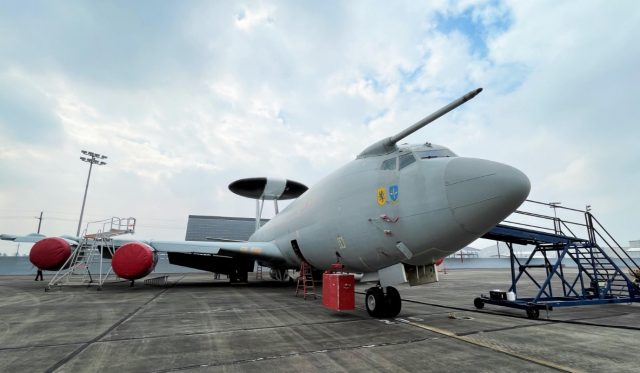
The US Navy’s Airborne Strategic Command, Control, and Communications Program Office (PMA-271) recently purchased a retired Royal Air Force E-3D that will be used as an E-6B Mercury pilot training aircraft.
The US bought the E-3D (also known as AWACS) for $15 million with the aim of reducing wear on the current mission-capable E-6 aircraft. E-6B serves two roles, one as an airborne command post and communications relay for US nuclear forces, and another as the provider of survivable communications links to the submarine forces using a very low frequency (VLF) terminal.
“The training flights expose mission aircraft to significant wear-and-tear and impact their readiness and availability,” said Capt. Adam Scott, PMA-271 program manager. “This is a great chance to work with the United Kingdom and bring a much-needed aircraft to the fleet.”
Since the E-6’s inception over three decades ago, the Navy has looked for ways to train pilots and keep them up to date on the airframe. Those options have included leasing several different commercial aircraft as well as using the mission-capable aircraft.
For the past several years, the program has been looking for a dedicated trainer and found one when the Royal Air Force decided to retire their fleet of E-3Ds.
Both the E-3 and E-6 are militarized versions of the Boeing 707.
When the funds became available in the National Defense Authorization Act for Fiscal Year 2021, the team moved fast.
Members of the program office went to Louisiana at the end of February to inspect the condition of the aircraft as they moved closer to acquiring it.
“This team has done a great job of moving quickly and capitalizing on this opportunity,” Scott said. “It’s a big win for the entire E-6 community.”
Once the aircraft comes to NAVAIR, a modification will begin with a goal to get it out to the fleet by October 2023.
The aircraft will help reduce an estimated 600 flight hours and 2,400 landings/cycles per year from the E-6 mission aircraft.


























